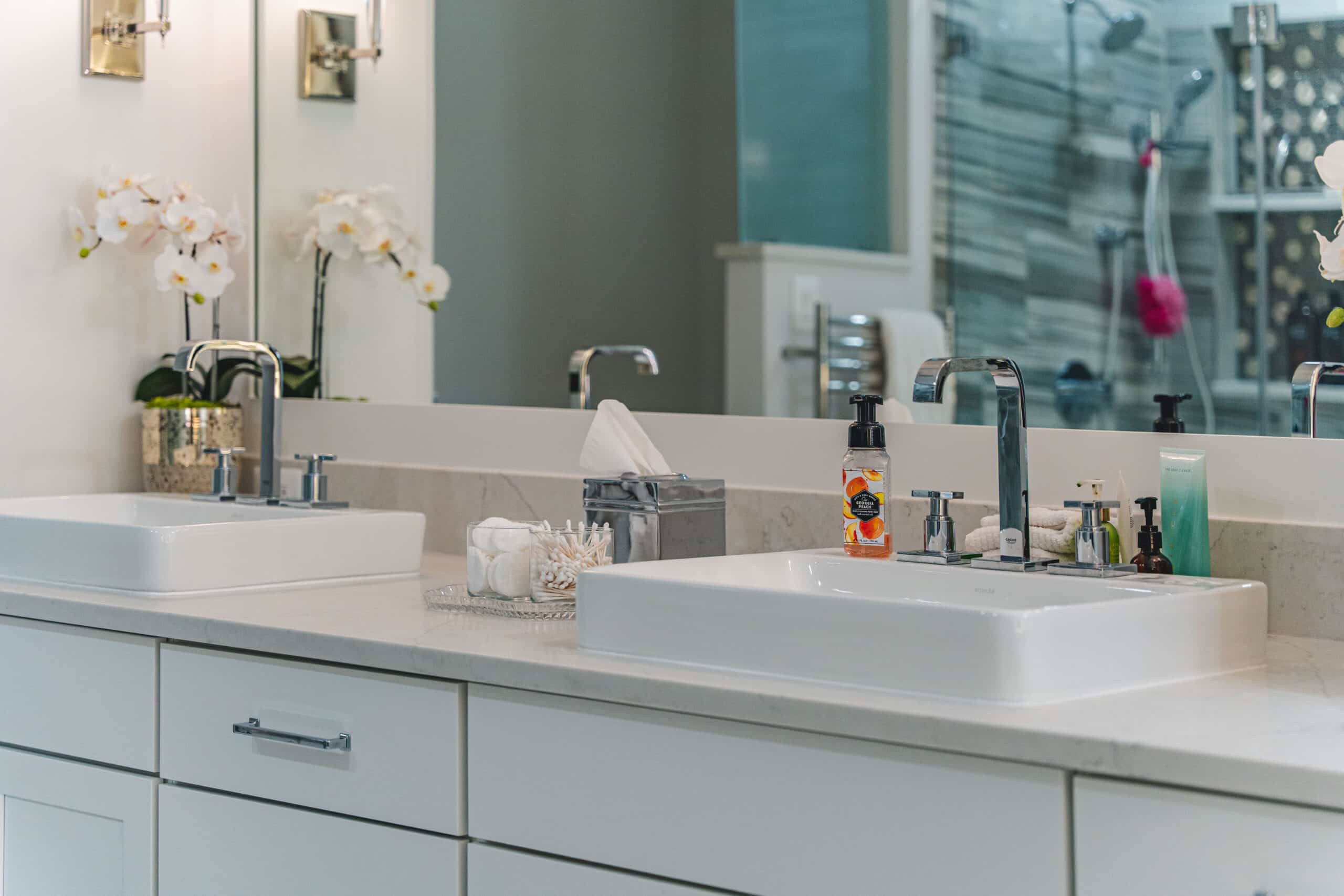Remodeling a bathroom is one of the most valuable home improvements you can make. But whether you’re doing it yourself or hiring a contractor, one of the most common and crucial questions is:
“What do you do first in a bathroom remodel?“
The short answer: Planning and preparation always come first. Jumping straight into demolition without a clear plan is a recipe for delays, mistakes, and added costs. In this comprehensive guide, you’ll learn what you should do first, what steps to follow next, and how to kick off your bathroom remodel with confidence and efficiency.
Why Start With the Right First Step?
Bathrooms are complex spaces. They include plumbing, electrical, ventilation, tile work, cabinetry, waterproofing, and finishing—all in a small area. Starting your remodel the right way helps you:

- Avoid costly mistakes
- Stay within budget
- Minimize project delays
- Ensure a safe, code-compliant renovation
Read More: How Many People Does It Take to Do a Bathroom Renovation? | A Full Breakdown by Role and Scope
Step 1: Define Your Bathroom Remodel Goals
Before picking up a hammer, you need a clear vision of what you want to achieve. Ask yourself:
Is it just a cosmetic update or a complete gut renovation? Do you want to change the layout or keep it the same?
Are you upgrading fixtures and finishes for style or functionality?
What problems are you trying to solve? (e.g., lack of storage, poor lighting, outdated look)
Pro Tip: Write down your goals, must-haves, and nice-to-haves. This will guide every decision moving forward.
Read More: Why Do Bathroom Remodels Take So Long? | A Deep Dive Into Delays and Timelines
Step 2: Set a Realistic Budget
Budgeting is the foundation of any successful remodel. You’ll need to consider:
- Labor costs (if hiring professionals)
- Materials: tiles, fixtures, vanities, mirrors, lighting, etc.
- Permits and inspections
- Contingency fund (10–20%) for unexpected costs
Typical cost ranges:
- Small bathroom remodel: $4,000–$10,000
- Mid-range remodel: $10,000–$20,000
- Luxury bathroom: $25,000 and up
Tip: Use a spreadsheet to organize expenses and prioritize spending based on your goals.
Read More: What Do You Need for a Bathroom Renovation? | A Complete Guide for Homeowners
Step 3: Plan Your Design and Layout
Once your goals and budget are in place, it’s time to design your new bathroom.
Key design decisions include:
- Tub, shower, or both?
- Vanity type and placement
- Storage solutions (shelves, cabinets, niches)
- Lighting layout (task, ambient, accent)
- Tile patterns and finishes
- Paint colors and hardware
If you’re changing the layout, you may need to reconfigure the plumbing and electrical systems, which can significantly increase both the time and cost.
Consider using online design tools or hiring a designer to create a 3D layout.
Read More: Best Tips to Follow for Bathroom Renovation: A Homeowner’s Complete Guide
Step 4: Get Permits (If Required)
If your remodel includes:
- Moving plumbing or electrical lines
- Structural changes
- Ventilation upgrades
…you may need a building permit. Contact your local municipality or ask your contractor.
Why permits matter:
- Ensures work meets code
- Required for insurance
- Necessary when selling your home
Tip: Don’t skip this step—even if the work is “behind the walls.”
Read More: What Is Involved in a Small Bathroom Remodel? | Complete DIY and Budget-Friendly Guide
Step 5: Order Materials and Fixtures
Long wait times on materials can delay your entire project. Once your design is finalized, order everything early, including:
- Tiles and grout
- Tub, shower, and faucets
- Toilet and vanity
- Lighting fixtures
- Cabinets and mirrors
- Paint and accessories
Check lead times—some items (like custom vanities or frameless shower doors) can take 4–8 weeks to arrive.
Avoid ordering during or after demolition—it could leave your bathroom unusable for longer than necessary.
Read More: How to Remodel a Bathroom DIY: A Complete Step-by-Step Homeowner’s Guide
Step 6: Hire the Right Professionals (If Needed)
If you’re not doing a full DIY remodel, now is the time to hire licensed professionals such as:
- Plumbers
- Electricians
- Tilers
- General contractors
Get multiple quotes, check references, and verify insurance and licenses.
Tip: Ask each professional how their work fits into the schedule so there are no gaps or overlaps in the workflow.
Read More: How to Hang a Floating Shelf on Drywall: A Complete DIY Guide
Step 7: Prepare the Work Area
Before demolition starts, take time to prep:

- Remove personal items: towels, toiletries, décor
- Protect nearby rooms from dust with plastic sheeting
- Set up a backup bathroom if this is your only one
- Shut off the water to the bathroom
If you’re doing the work yourself, have tools and safety gear ready (gloves, goggles, masks).
A clean, safe, and empty space speeds up a demo and reduces the risk of damage to your home.
Read More: Tips to Add Additional Kitchen Cabinets: Smart Storage Solutions for Every Home
Step 8: Demolition (Now You Can Start!)
This is the physical beginning of the remodel. Depending on your scope, this can include:
- Removing old fixtures and vanities
- Tearing out tile or flooring
- Demolishing drywall or cement board
- Pulling out the tub or shower surround
Be cautious of hidden plumbing, electrical wires, and mold. Know what you’re tearing into.
Read More: How Can We Get the Best Kitchen Pull-Out Shelves? A Complete Guide
Summary: First Steps Matter Most
So, what’s the first thing to do in a bathroom remodel?
It’s not grabbing a sledgehammer—it’s planning. Here’s a quick recap:
StepAction
1 Define goals
2 Set a budget
3 Plan the layout and design
4 Check for permits
5 Order materials
6 Hire professionals
7 Prep the work area
8 Begin demolition
Starting smart ensures your bathroom remodel is efficient, on budget, and headache-free.
